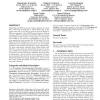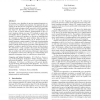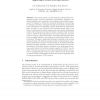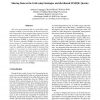249 search results - page 46 / 50 » Ten Theses on Logic Languages for the Semantic Web |
CCS
2008
ACM
13 years 10 months ago
2008
ACM
Single-Sign-On (SSO) protocols enable companies to establish a federated environment in which clients sign in the system once and yet are able to access to services offered by dif...
DLOG
2006
13 years 10 months ago
2006
On the Semantic Web, there has been increasing demand for a ruleslike expressivity that goes beyond OWL-DL. Efforts of combining rules languages and description logics usually pro...
POPL
2011
ACM
12 years 11 months ago
2011
ACM
We describe a new algorithm for proving temporal properties expressed in LTL of infinite-state programs. Our approach takes advantage of the fact that LTL properties can often be...
ADBIS
2005
Springer
14 years 2 months ago
2005
Springer
The current period of IT development is characterized by an explosive growth of diverse information representation languages. Applying integration and composition of heterogeneous ...
DEXAW
2007
IEEE
14 years 15 days ago
2007
IEEE
The vision of the Semantic Web is to make Web content machine-readable. To describe data, the Resource Description Framework has been extended with a schema-level and description ...




